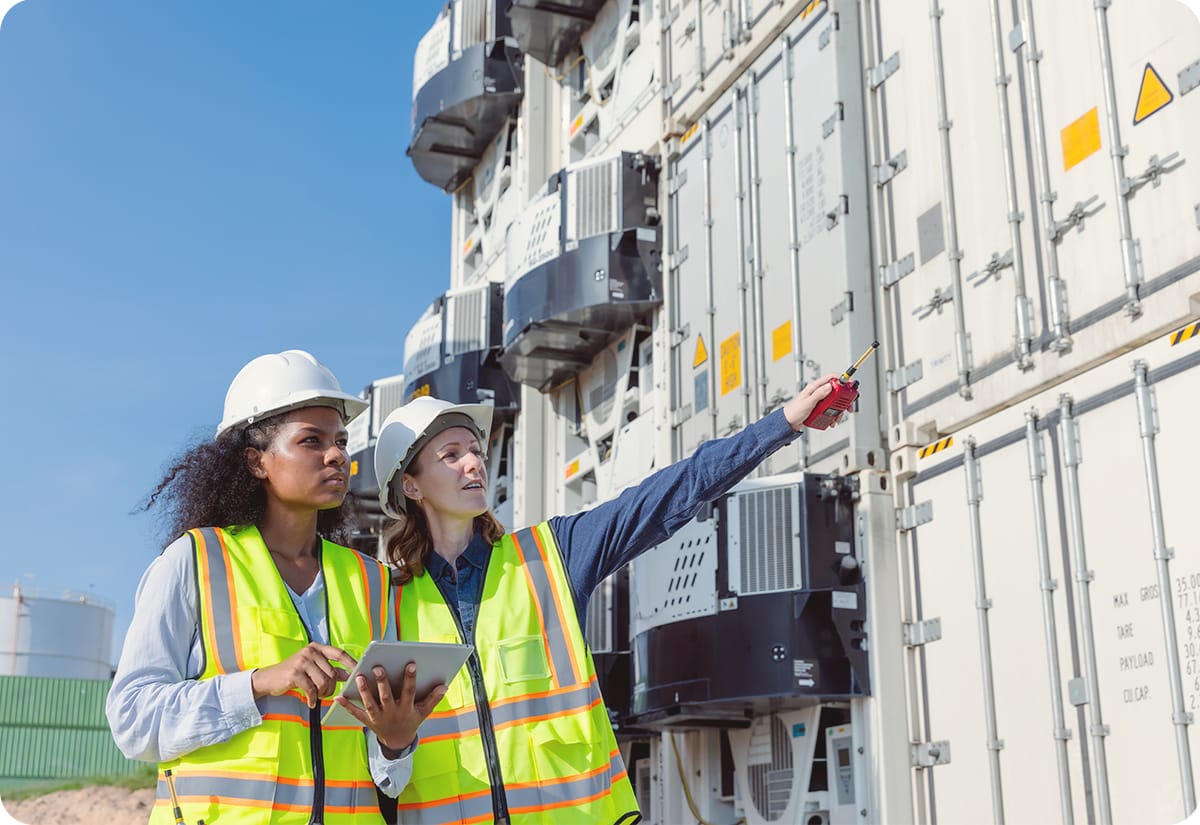To grow in a competitive market, businesses need to lower logistics costs without sacrificing speed, accuracy, or service. That’s where supply chain visibility comes in. When companies gain clearer insights into every part of their supply chain—from transportation to operations to vendor performance—they gain the power to optimize decisions, reduce waste, and scale smarter.
A global survey of more than 1,300 supply chain professionals found that 89% want to invest in agility—showing that transparency and adaptability are now top priorities for growth-focused companies.
In this blog, we’ll break down how clarity at each stage leads to greater efficiency and lasting cost savings.
Supply Chain Visibility and How It Affects Growing Businesses
When a business starts growing, so do the challenges in logistics. Shipments become more frequent, delivery expectations rise, and inventory gets harder to manage. This is where supply chain visibility makes a real difference.
By having a clear view of goods in transit, supplier schedules, and warehouse activities, businesses can prevent delays and reduce waste. It also supports better decisions—like knowing when to reorder, where to redirect shipments, or how to staff your fulfillment team.
For growing companies, supply chain visibility turns reactive operations into proactive systems. It helps scale smarter, avoid costly errors, and meet customer demands without overextending resources.
This type of clarity also helps align logistics planning with business goals. When leaders can connect warehouse activities with transportation, supplier timelines, and customer delivery needs, they’re able to create a more resilient and responsive supply chain that grows with the company.
How Transportation Visibility Reduces Delays and Costs
Transportation visibility gives growing businesses a powerful way to reduce delays, improve delivery timelines, and avoid unnecessary costs. Whether you’re managing short hauls or long-distance shipping, transportation visibility ensures greater control and proactive decision-making.
Here are five ways transportation visibility makes a real impact:
1. Real-Time Tracking Prevents Surprises
With real-time data, businesses can see where every shipment is. This helps avoid late deliveries, missed appointments, or lost goods—all of which cost money.
2. Carrier Performance Monitoring
Transportation visibility helps spot underperforming carriers. If a carrier often runs late or loses shipments, you can switch to one that’s more reliable.
3. Better Freight Planning
When you have clarity into route timing and capacity, you can make smarter shipping decisions. This means fewer expedited shipments and better use of freight space.
4. Faster Problem Solving
Delays happen, but transportation visibility allows you to react quickly. You can re-route shipments or adjust customer expectations before a problem becomes costly.
5. Reduced Idle Time and Dwell Charges
By tracking arrival and unloading times, companies can reduce costly idle time at docks and avoid detention fees.
Altogether, these small changes can lead to big savings over time. By investing in transportation visibility, companies can not only improve reliability but also uncover hidden inefficiencies across the network. As more systems become connected, transportation visibility plays a larger role in driving predictive planning, cost forecasting, and real-time responsiveness. Businesses that prioritize transportation visibility are better equipped to compete in fast-moving markets and meet growing customer expectations.
Improving Visibility in Supply Chain Operations for Efficiency
When companies improve visibility in supply chain operations, they unlock efficiency at every level. It means having the right data at the right time to make faster, smarter decisions. Clear visibility helps teams align better, detect bottlenecks early, and respond quickly to disruptions. Whether it’s managing inventory, coordinating logistics, or improving supplier performance, better transparency leads to streamlined operations and reduced costs. Here’s how:
- If teams don’t know what’s delayed, they can’t take action. But if a warehouse receives real-time data, it can adjust staffing or schedule outbound shipments better—this is where visibility in supply chain planning becomes critical.
- If inventory levels aren’t clear, businesses overstock or run out. With visibility in supply chain systems from tracking tools and dashboards, companies can manage stock more accurately.
- If data is scattered across systems, no one sees the big picture. When systems are connected, teams can analyze trends and forecast with confidence. Strong visibility in supply chain coordination ensures that all teams operate with the same clear information.
Modern technologies like GPS, cloud tools, and RFID improve visibility in supply chain operations. By using ERP systems, machine learning, and data analytics, companies can track raw materials, reduce costs, and streamline inventory management. These tools help businesses align teams, spot weak points, and scale as operations grow.
Supply Chain Transparency as a Driver of Stronger Partnerships
Supply chain transparency isn’t just a concept—it’s a powerful tool that makes partnerships stronger, more collaborative, and more efficient. Embracing supply chain transparency also helps businesses navigate disruptions more effectively by giving every partner access to the same real-time information.
Here’s how it helps:
| Benefit | How It Strengthens Partnerships |
| Builds Trust | Sharing data openly shows reliability and integrity. |
| Improves Communication | Partners can align expectations and timelines. |
| Reduces Disputes | Clear tracking and reporting prevent misunderstandings. |
| Increases Accountability | Everyone involved knows who owns each process. |
| Enables Joint Planning | With shared data, teams can forecast and grow together. |
Supply chain transparency improves how businesses work together. It promotes visibility, accountability, and strategic alignment across the network—making it a cornerstone of long-term logistics success. It’s not just about data—it’s about trust. When vendors and stakeholders can see what’s happening in real time, they’re more likely to support changes, offer solutions, and collaborate for success.
Whether it’s reducing waste or speeding up delivery, partnerships backed by supply chain transparency tend to perform better. As new digital platforms emerge, supply chain transparency will continue to grow as a competitive advantage and trust-building mechanism.
Ready to Gain Visibility and Cut Costs?
We understand how overwhelming logistics can become as your business grows—and how much is at stake when delays, miscommunication, or hidden costs creep in.
At Supply Chain Solutions, we help growing businesses unlock the power of supply chain visibility. From transportation tracking to full operational insight, our solutions are designed to help you optimize performance, lower logistics expenses, and scale confidently.
Let’s talk about how we can support your goals—reach out to our team to start building a more visible, efficient, and cost-effective supply chain.

